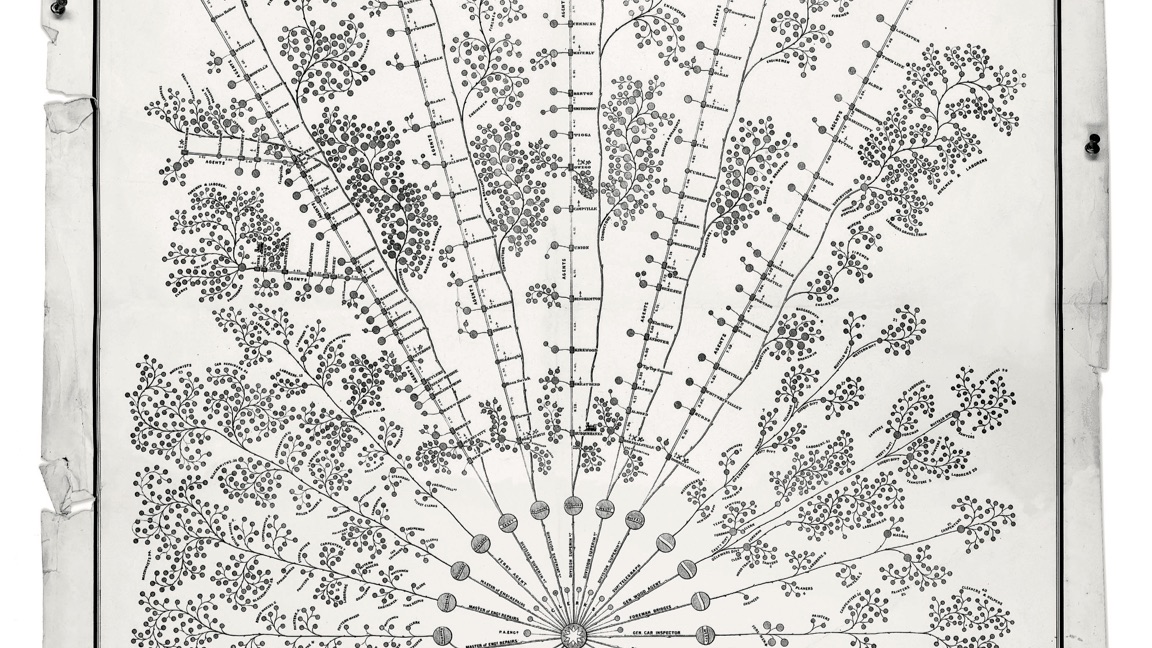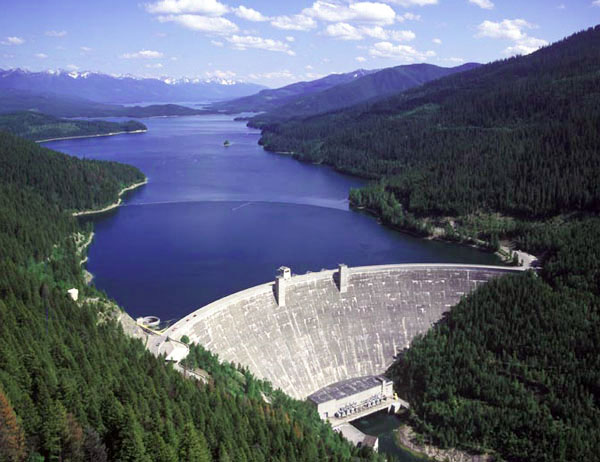Dengue fever is bad. It's real bad. Dengue is a mosquito-borne disease that occurs in tropical and sub-tropical parts of the world. In mild cases, symptoms are similar to the flu: fever, rash and muscle and joint pain. But severe cases are dangerous, and dengue fever can cause severe bleeding, low blood pressure and even death.
Because it is carried by mosquitoes, the transmission dynamics of dengue are related to climate variables such as temperature and precipitation. Although the relationship to climate is complex, a growing number of scientists argue that climate change is likely to produce distributional shifts that will have significant public health implications worldwide.
We've launched a competition to use open data to predict the occurrence of Dengue based on climatological data. Here's a first look at the data and how to get started!
As always, we begin with the sacred import's of data science:
%matplotlib inline
from __future__ import print_function
from __future__ import division
import pandas as pd
import numpy as np
from matplotlib import pyplot as plt
import seaborn as sns
from sklearn.model_selection import train_test_split
import statsmodels.api as sm
# just for the sake of this blog post!
from warnings import filterwarnings
filterwarnings("ignore")
A Tale of Two Cities¶

This dataset has two cities in it: San Juan, Puerto Rico (right) and Iquitos, Peru (left). Since we hypothesize that the spread of dengue may follow different patterns between the two, we will divide the dataset, train seperate models for each city, and then join our predictions before making our final submission.
# load the provided data
train_features = pd.read_csv(
"../data-processed/dengue_features_train.csv", index_col=[0, 1, 2]
)
train_labels = pd.read_csv(
"../data-processed/dengue_labels_train.csv", index_col=[0, 1, 2]
)
# Seperate data for San Juan
sj_train_features = train_features.loc["sj"]
sj_train_labels = train_labels.loc["sj"]
# Separate data for Iquitos
iq_train_features = train_features.loc["iq"]
iq_train_labels = train_labels.loc["iq"]
print("San Juan")
print("features: ", sj_train_features.shape)
print("labels : ", sj_train_labels.shape)
print("\nIquitos")
print("features: ", iq_train_features.shape)
print("labels : ", iq_train_labels.shape)
The problem description gives a good overview of the available variables, but we'll look at the head of the data here as well:
sj_train_features.head()
There are a lot of climate variables here, but the first thing that we'll note is that the week_start_date is included in the feature set. This makes it easier for competitors to create time based features, but for this first-pass model, we'll drop that column since we shouldn't use it as a feature in our model.
# Remove `week_start_date` string.
sj_train_features.drop("week_start_date", axis=1, inplace=True)
iq_train_features.drop("week_start_date", axis=1, inplace=True)
Next, let's check to see if we are missing any values in this dataset:
# Null check
pd.isnull(sj_train_features).any()
(sj_train_features.ndvi_ne.plot.line(lw=0.8))
plt.title("Vegetation Index over Time")
plt.xlabel("Time")
Since these are time-series, we can see the gaps where there are NaNs by plotting the data. Since we can't build a model without those values, we'll take a simple approach and just fill those values with the most recent value that we saw up to that point. This is probably a good part of the problem to improve your score by getting smarter.
sj_train_features.fillna(method="ffill", inplace=True)
iq_train_features.fillna(method="ffill", inplace=True)
Distribution of labels¶
Our target variable, total_cases is a non-negative integer, which means we're looking to make some count predictions. Standard regression techniques for this type of prediction include
- Poisson regression
- Negative binomial regression
Which techniqe will perform better depends on many things, but the choice between Poisson regression and negative binomial regression is pretty straightforward. Poisson regression fits according to the assumption that the mean and variance of the population distributiona are equal. When they aren't, specifically when the variance is much larger than the mean, the negative binomial approach is better. Why? It isn't magic. The negative binomial regression simply lifts the assumption that the population mean and variance are equal, allowing for a larger class of possible models. In fact, from this perspective, the Poisson distribution is but a special case of the negative binomial distribution.
Let's see how our labels are distributed!
print("San Juan")
print("mean: ", sj_train_labels.mean()[0])
print("var :", sj_train_labels.var()[0])
print("\nIquitos")
print("mean: ", iq_train_labels.mean()[0])
print("var :", iq_train_labels.var()[0])
It's looking like a negative-binomial sort of day in these parts.
sj_train_labels.hist()
iq_train_labels.hist()
variance >> mean suggests total_cases can be described by a negative binomial distribution, so we'll use a negative binomial regression below.¶
Which inputs strongly correlate with total_cases?¶
Our next step in this process will be to select a subset of features to include in our regression. Our primary purpose here is to get a better understanding of the problem domain rather than eke out the last possible bit of predictive accuracy. The first thing we will do is to add the total_cases to our dataframe, and then look at the correlation of that variable with the climate variables.
sj_train_features["total_cases"] = sj_train_labels.total_cases
iq_train_features["total_cases"] = iq_train_labels.total_cases
Compute the data correlation matrix.
# compute the correlations
sj_correlations = sj_train_features.corr()
iq_correlations = iq_train_features.corr()
# plot san juan
sj_corr_heat = sns.heatmap(sj_correlations)
plt.title("San Juan Variable Correlations")
# plot iquitos
iq_corr_heat = sns.heatmap(iq_correlations)
plt.title("Iquitos Variable Correlations")
Many of the temperature data are strongly correlated, which is expected. But the total_cases variable doesn't have many obvious strong correlations.¶
Interestingly, total_cases seems to only have weak correlations with other variables. Many of the climate variables are much more strongly correlated. Interestingly, the vegetation index also only has weak correlation with other variables. These correlations may give us some hints as to how to improve our model that we'll talk about later in this post. For now, let's take a sorted look at total_cases correlations.
# San Juan
(
sj_correlations.total_cases.drop("total_cases") # don't compare with myself
.sort_values(ascending=False)
.plot.barh()
)
# Iquitos
(
iq_correlations.total_cases.drop("total_cases") # don't compare with myself
.sort_values(ascending=False)
.plot.barh()
)
A few observations¶
The wetter the better¶
- The correlation strengths differ for each city, but it looks like
reanalysis_specific_humidity_g_per_kgandreanalysis_dew_point_temp_kare the most strongly correlated withtotal_cases. This makes sense: we know mosquitos thrive wet climates, the wetter the better!
Hot and heavy¶
- As we all know, "cold and humid" is not a thing. So it's not surprising that as minimum temperatures, maximum temperatures, and average temperatures rise, the
total_casesof dengue fever tend to rise as well.
Sometimes it rains, so what¶
- Interestingly, the
precipitationmeasurements bear little to no correlation tototal_cases, despite strong correlations to thehumiditymeasurements, as evident by the heatmaps above.
This is just a first pass¶
Precisely none of these correlations are very strong. Of course, that doesn't mean that some feature engineering wizardry can't put us in a better place (standing_water estimate, anyone?). Also, it's always useful to keep in mind that life isn't linear, but out-of-the-box correlation measurement is – or at least, it measures linear dependence.
Nevertheless, for this benchmark we'll focus on the linear wetness trend we see above, and reduce our inputs to
A few good variables¶
reanalysis_specific_humidity_g_per_kgreanalysis_dew_point_temp_kstation_avg_temp_cstation_min_temp_c
A mosquito model¶
Now that we've explored this data, it's time to start modeling. Our first step will be to build a function that does all of the preprocessing we've done above from start to finish. This will make our lives easier, since it needs to be applied to the test set and the traning set before we make our predictions.
def preprocess_data(data_path, labels_path=None):
# load data and set index to city, year, weekofyear
df = pd.read_csv(data_path, index_col=[0, 1, 2])
# select features we want
features = [
"reanalysis_specific_humidity_g_per_kg",
"reanalysis_dew_point_temp_k",
"station_avg_temp_c",
"station_min_temp_c",
]
df = df[features]
# fill missing values
df.fillna(method="ffill", inplace=True)
# add labels to dataframe
if labels_path:
labels = pd.read_csv(labels_path, index_col=[0, 1, 2])
df = df.join(labels)
# separate san juan and iquitos
sj = df.loc["sj"]
iq = df.loc["iq"]
return sj, iq
sj_train, iq_train = preprocess_data(
"../data-processed/dengue_features_train.csv",
labels_path="../data-processed/dengue_labels_train.csv",
)
Now we can take a look at the smaller dataset and see that it's ready to start modelling:
sj_train.describe()
iq_train.describe()
Split it up!¶
Since this is a timeseries model, we'll use a strict-future holdout set when we are splitting our train set and our test set. We'll keep around three quarters of the original data for training and use the rest to test. We'll do this separately for our San Juan model and for our Iquitos model.
sj_train_subtrain = sj_train.head(800)
sj_train_subtest = sj_train.tail(sj_train.shape[0] - 800)
iq_train_subtrain = iq_train.head(400)
iq_train_subtest = iq_train.tail(iq_train.shape[0] - 400)
Training time¶
This is where we start getting down to business. As we noted above, we'll train a NegativeBinomial model, which is often used for count data where the mean and the variance are very different. In this function we have three steps. The first is to specify the functional form
from statsmodels.tools import eval_measures
import statsmodels.formula.api as smf
def get_best_model(train, test):
# Step 1: specify the form of the model
model_formula = (
"total_cases ~ 1 + "
"reanalysis_specific_humidity_g_per_kg + "
"reanalysis_dew_point_temp_k + "
"station_min_temp_c + "
"station_avg_temp_c"
)
grid = 10 ** np.arange(-8, -3, dtype=np.float64)
best_alpha = []
best_score = 1000
# Step 2: Find the best hyper parameter, alpha
for alpha in grid:
model = smf.glm(
formula=model_formula,
data=train,
family=sm.families.NegativeBinomial(alpha=alpha),
)
results = model.fit()
predictions = results.predict(test).astype(int)
score = eval_measures.meanabs(predictions, test.total_cases)
if score < best_score:
best_alpha = alpha
best_score = score
print("best alpha = ", best_alpha)
print("best score = ", best_score)
# Step 3: refit on entire dataset
full_dataset = pd.concat([train, test])
model = smf.glm(
formula=model_formula,
data=full_dataset,
family=sm.families.NegativeBinomial(alpha=best_alpha),
)
fitted_model = model.fit()
return fitted_model
sj_best_model = get_best_model(sj_train_subtrain, sj_train_subtest)
iq_best_model = get_best_model(iq_train_subtrain, iq_train_subtest)
figs, axes = plt.subplots(nrows=2, ncols=1)
# plot sj
sj_train["fitted"] = sj_best_model.fittedvalues
sj_train.fitted.plot(ax=axes[0], label="Predictions")
sj_train.total_cases.plot(ax=axes[0], label="Actual")
# plot iq
iq_train["fitted"] = iq_best_model.fittedvalues
iq_train.fitted.plot(ax=axes[1], label="Predictions")
iq_train.total_cases.plot(ax=axes[1], label="Actual")
plt.suptitle("Dengue Predicted Cases vs. Actual Cases")
plt.legend()
Reflecting on our performance¶
These graphs can actually tell us a lot about where our model is going wrong and give us some good hints about where investments will improve the model performance. For example, we see that our model in blue does track the seasonality of Dengue cases. However, the timing of the seasonality of our predictions has a mismatch with the actual results. One potential reason for this is that our features don't look far enough into the past--that is to say, we are asking to predict cases at the same time as we are measuring percipitation. Because dengue is misquito born, and the misquito lifecycle depends on water, we need to take both the life of a misquito and the time between infection and symptoms into account when modeling dengue. This is a critical avenue to explore when improving this model.
The other important error is that our predictions are relatively consistent--we miss the spikes that are large outbreaks. One reason is that we don't take into account the contagiousness of dengue. A possible way to account for this is to build a model that progressively predicts a new value while taking into account the previous prediction. By training on the dengue outbreaks and then using the predicted number of patients in the week before, we can start to model this time dependence that the current model misses.
So, we know we're not going to win this thing, but let's submit the model anyway!
sj_test, iq_test = preprocess_data("../data-processed/dengue_features_test.csv")
sj_predictions = sj_best_model.predict(sj_test).astype(int)
iq_predictions = iq_best_model.predict(iq_test).astype(int)
submission = pd.read_csv("../data-processed/submission_format.csv", index_col=[0, 1, 2])
submission.total_cases = np.concatenate([sj_predictions, iq_predictions])
submission.to_csv("../data-processed/benchmark.csv")

Alright, it's a start! To build your own model you can grab this notebook from our benchmarks repo.
Good luck, and enjoy!



















